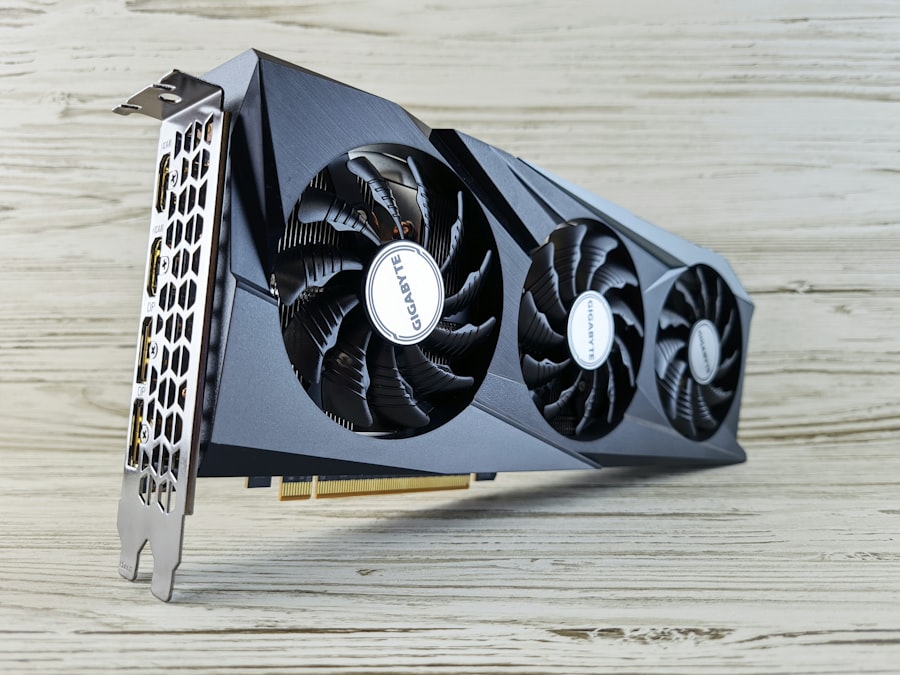Aftercare is a crucial component of the laser hair removal process that often gets overlooked. You may be excited about the results and eager to show off your smooth skin, but neglecting proper aftercare can lead to complications that could diminish your results or even cause discomfort. Understanding the importance of aftercare is essential for ensuring that you achieve the best possible outcome from your treatment.
Aftercare not only helps in maintaining the results of the procedure but also plays a significant role in your overall skin health. When you undergo laser hair removal, your skin experiences a certain level of trauma due to the heat generated by the laser. This can lead to temporary redness, swelling, or sensitivity in the treated areas.
By following a proper aftercare routine, you can minimize these side effects and promote healing. Additionally, effective aftercare can help prevent complications such as hyperpigmentation or infection, which can arise if the skin is not cared for properly. Therefore, taking the time to understand and implement aftercare practices is vital for both your comfort and the longevity of your results.
Key Takeaways
- Aftercare is crucial for successful laser hair removal treatment
- Moisturizing and hydrating the skin is essential to maintain its health and elasticity
- Sun exposure should be avoided and sunscreen should be used to protect the treated area
- Gentle exfoliation can help prevent ingrown hairs and keep the skin smooth
- Using soothing and cooling products can help alleviate any discomfort or irritation after treatment
Moisturizing and Hydrating the Skin
One of the most important aspects of aftercare is keeping your skin well-moisturized and hydrated. After laser hair removal, your skin may feel dry or tight, which is a natural response to the treatment. Applying a gentle, hydrating moisturizer can help soothe your skin and restore its natural moisture barrier.
Look for products that are free from harsh chemicals and fragrances, as these can irritate sensitive skin. Instead, opt for soothing ingredients like aloe vera, hyaluronic acid, or glycerin, which can provide relief and hydration. In addition to topical moisturizers, it’s essential to stay hydrated from within.
Drinking plenty of water helps maintain your skin’s elasticity and overall health.
Incorporating hydrating foods into your diet, such as fruits and vegetables with high water content, can also contribute to your skin’s recovery.
By prioritizing hydration both topically and internally, you can enhance your skin’s resilience and promote a smoother recovery after laser hair removal.
Avoiding Sun Exposure and Using Sunscreen

Sun exposure can be particularly damaging to your skin after laser hair removal. The treated areas are more sensitive and susceptible to sunburn or pigmentation changes. To protect your skin, it’s crucial to avoid direct sunlight for at least two weeks following your treatment.
If you must be outdoors, wearing protective clothing or seeking shade can help shield your skin from harmful UV rays. This precaution is not just about comfort; it’s about preserving the results of your treatment and ensuring that your skin heals properly. In addition to avoiding sun exposure, using a broad-spectrum sunscreen with a high SPF is essential.
Even on cloudy days or during winter months, UV rays can penetrate through clouds and cause damage. Applying sunscreen daily to the treated areas will help prevent any adverse reactions and maintain an even skin tone. Look for sunscreens that are specifically formulated for sensitive skin to avoid irritation.
By making sun protection a priority in your aftercare routine, you can safeguard your skin against potential harm and enhance the longevity of your laser hair removal results.
Gentle Exfoliation to Prevent Ingrown Hairs
| Exfoliation Method | Frequency | Benefits |
|---|---|---|
| Physical Exfoliation | 2-3 times per week | Removes dead skin cells, prevents hair from curling back into the skin |
| Chemical Exfoliation | 1-2 times per week | Dissolves dead skin cells, reduces inflammation and redness |
Ingrown hairs can be a common concern following laser hair removal, especially if you have coarse or curly hair. To minimize this risk, gentle exfoliation is key. Exfoliating helps remove dead skin cells that can clog hair follicles and lead to ingrown hairs.
However, it’s important to approach exfoliation with caution in the days immediately following your treatment. Your skin may be sensitive, so opt for mild exfoliating products or techniques that won’t irritate the area. Once your skin has had time to heal—typically after a week—you can incorporate gentle exfoliation into your routine.
Consider using a soft washcloth or a gentle scrub with natural ingredients like sugar or oatmeal. Chemical exfoliants containing alpha-hydroxy acids (AHAs) or beta-hydroxy acids (BHAs) can also be effective but should be used sparingly and with caution. Regular exfoliation not only helps prevent ingrown hairs but also promotes smoother skin by encouraging cell turnover.
By being mindful of how you exfoliate post-treatment, you can enjoy the benefits of laser hair removal without the hassle of ingrown hairs.
Using Soothing and Cooling Products
After undergoing laser hair removal, your skin may feel warm or irritated due to the heat generated during the procedure. To alleviate discomfort, incorporating soothing and cooling products into your aftercare routine can be incredibly beneficial. Look for products that contain calming ingredients such as chamomile, calendula, or green tea extract.
These natural ingredients have anti-inflammatory properties that can help reduce redness and soothe irritated skin. In addition to topical treatments, consider using cool compresses on the treated areas if you experience significant discomfort. A clean cloth soaked in cool water can provide immediate relief and help calm any inflammation.
You might also explore gel-based products designed specifically for post-laser care; these often have a cooling effect that can enhance comfort levels. By prioritizing soothing treatments in your aftercare regimen, you’ll not only feel better but also support your skin’s healing process.
Avoiding Harsh Chemicals and Fragrances

Your skin is particularly vulnerable after laser hair removal, making it essential to avoid harsh chemicals and fragrances in your skincare products. Many conventional skincare items contain ingredients that can irritate sensitive skin or trigger allergic reactions, which could complicate your recovery process. Instead of reaching for products laden with synthetic fragrances or strong preservatives, opt for gentle formulations designed for sensitive skin.
When selecting skincare products post-treatment, look for those labeled as hypoallergenic or non-comedogenic. Ingredients like ceramides, aloe vera, and vitamin E are excellent choices as they nourish and protect the skin without causing irritation. Additionally, be cautious with makeup; if you choose to wear it after treatment, select mineral-based products that are less likely to irritate your skin.
By being mindful of what you apply to your skin during this sensitive period, you can promote healing and maintain the results of your laser hair removal.
Treating Any Irritation or Redness
It’s not uncommon to experience some level of irritation or redness following laser hair removal; however, knowing how to treat these symptoms effectively is crucial for a smooth recovery. If you notice any persistent redness or irritation beyond what is expected, it’s important to address it promptly. Over-the-counter hydrocortisone cream may help reduce inflammation and soothe irritated areas; however, consult with your laser hair removal specialist before applying any new products.
In addition to topical treatments, consider incorporating calming practices into your routine. For instance, avoiding hot showers or baths immediately after treatment can help prevent further irritation. Instead, opt for lukewarm water when cleansing the treated areas.
If you experience discomfort while wearing tight clothing over the treated areas, consider wearing loose-fitting garments until your skin has fully healed. By taking proactive steps to manage irritation and redness, you’ll enhance your comfort level and support optimal healing.
Following Up with Your Laser Hair Removal Specialist
Finally, one of the most important aspects of aftercare is maintaining open communication with your laser hair removal specialist. Scheduling follow-up appointments allows them to monitor your progress and address any concerns you may have regarding your recovery process. These check-ins are an opportunity for you to discuss any side effects you’re experiencing or ask questions about ongoing care.
Your specialist can provide personalized recommendations based on how your skin is responding post-treatment. They may suggest adjustments to your aftercare routine or additional treatments if necessary. Remember that every individual’s skin reacts differently; what works for one person may not work for another.
By staying engaged with your specialist throughout the healing process, you’ll ensure that you receive tailored advice that supports both your comfort and the effectiveness of your laser hair removal journey. In conclusion, proper aftercare following laser hair removal is essential for achieving optimal results and maintaining healthy skin. By prioritizing hydration, sun protection, gentle exfoliation, soothing treatments, and open communication with your specialist, you set yourself up for success in this transformative journey toward smooth skin.
Taking these steps will not only enhance your comfort but also ensure that you enjoy long-lasting results from your investment in laser hair removal.
After undergoing the best laser hair removal treatment, it is crucial to follow proper aftercare therapies to ensure optimal results. One related article that provides valuable information on post-treatment care is available on the In Laser Hair Removal blog. This article discusses the importance of moisturizing, avoiding sun exposure, and using gentle skincare products to maintain smooth and hair-free skin after laser hair removal. By following these aftercare tips, individuals can prolong the results of their treatment and achieve long-lasting hair reduction.
FAQs
What is laser hair removal aftercare therapy?
Laser hair removal aftercare therapy refers to the post-treatment care and maintenance required to ensure the best results and minimize any potential side effects after undergoing a laser hair removal procedure.
Why is laser hair removal aftercare important?
Laser hair removal aftercare is important to promote healing, reduce the risk of complications, and maintain the effectiveness of the treatment. It helps to soothe the skin, prevent infections, and minimize any potential adverse reactions.
What are some common aftercare practices for laser hair removal?
Common aftercare practices for laser hair removal may include applying soothing creams or gels, avoiding sun exposure, wearing loose clothing, avoiding hot showers or baths, and following specific instructions provided by the treatment provider.
How long does laser hair removal aftercare therapy last?
The duration of laser hair removal aftercare therapy can vary depending on the individual’s skin type, the treated area, and the specific instructions provided by the treatment provider. It is typically recommended to follow the aftercare practices for a few days to a few weeks post-treatment.
Are there any specific products recommended for laser hair removal aftercare?
There are various products recommended for laser hair removal aftercare, including gentle cleansers, moisturizers, aloe vera gels, and products containing ingredients such as hyaluronic acid or vitamin E. It is important to consult with the treatment provider for specific product recommendations based on individual needs.




